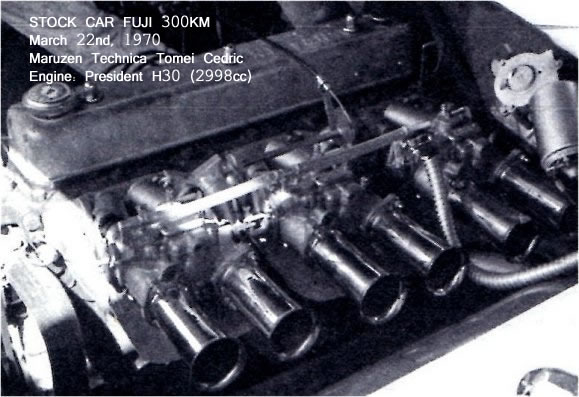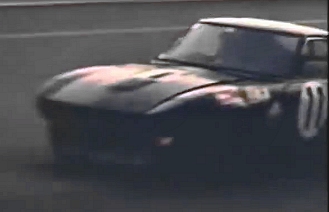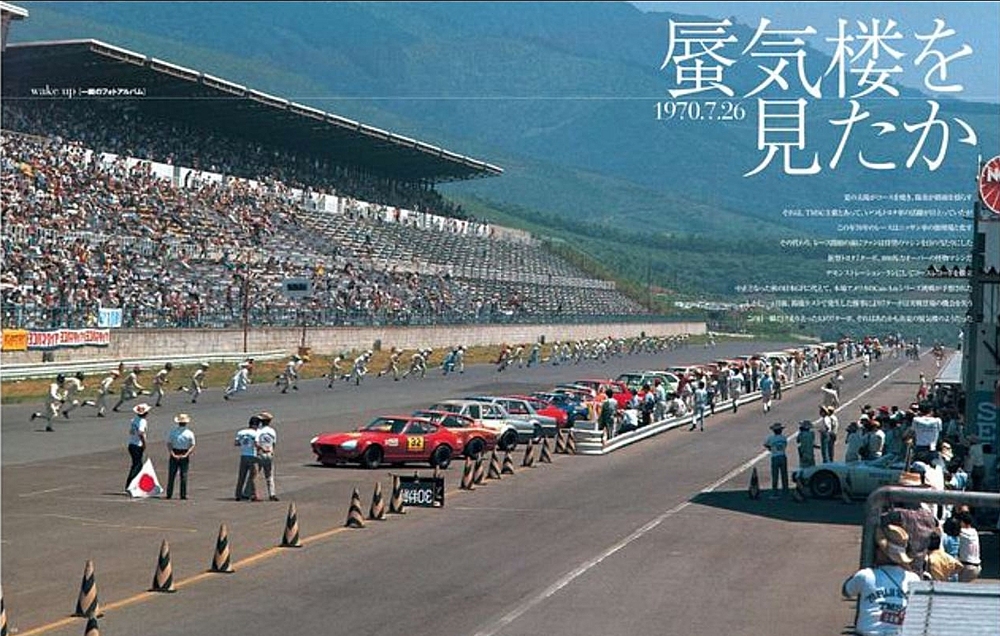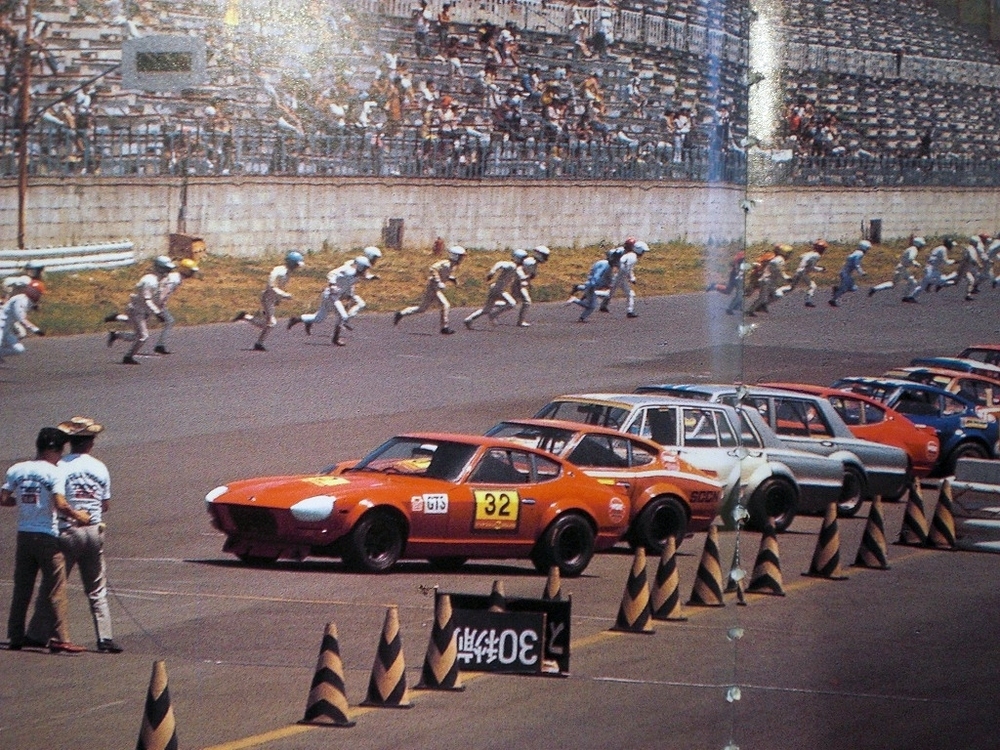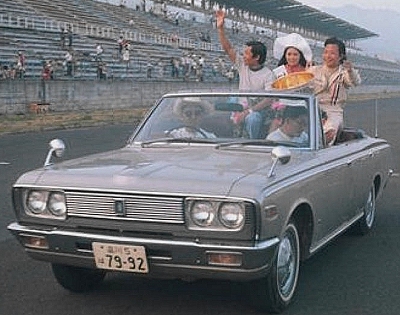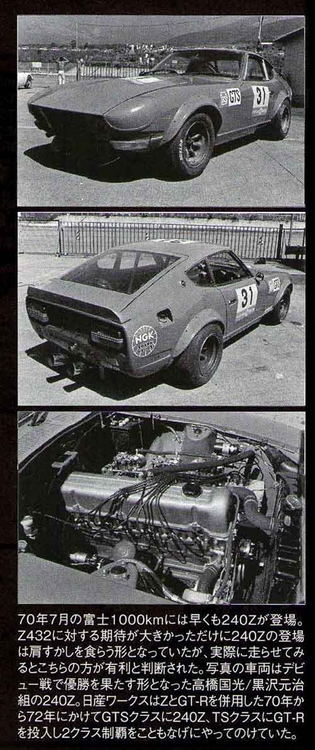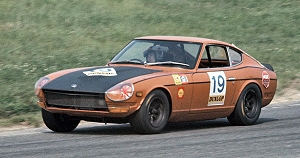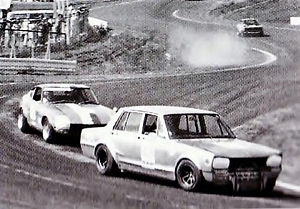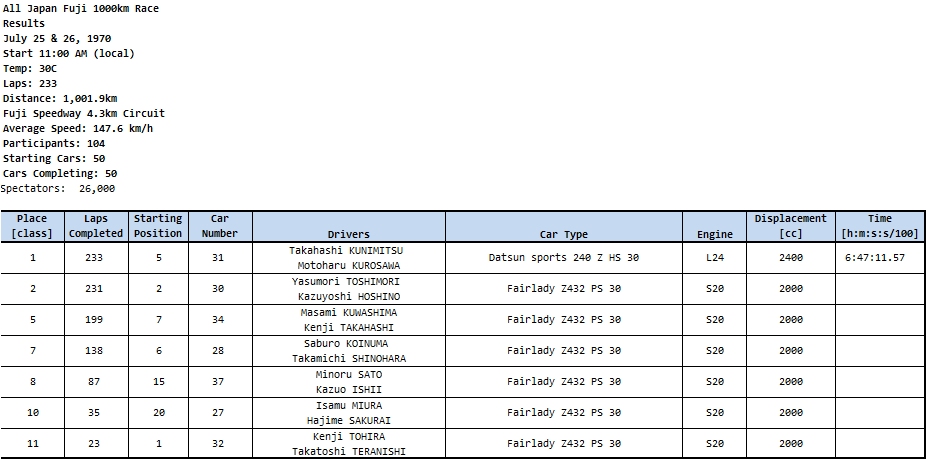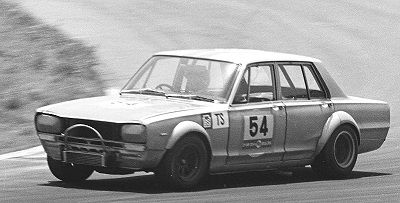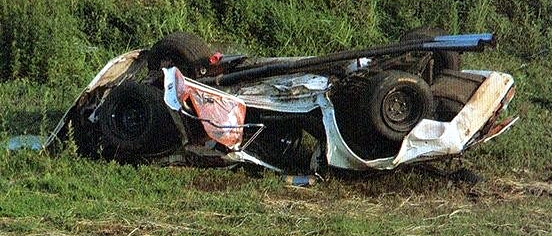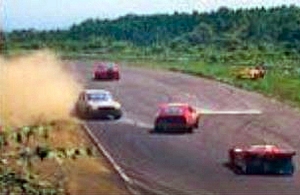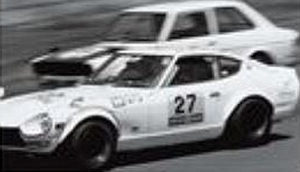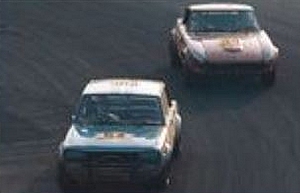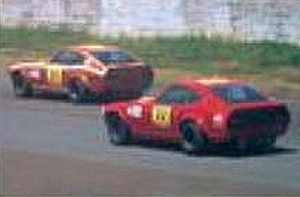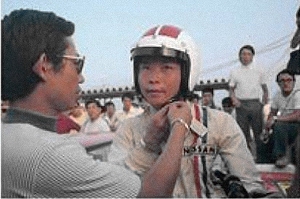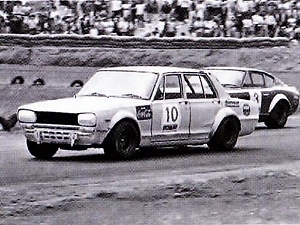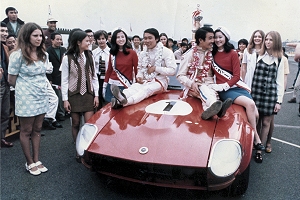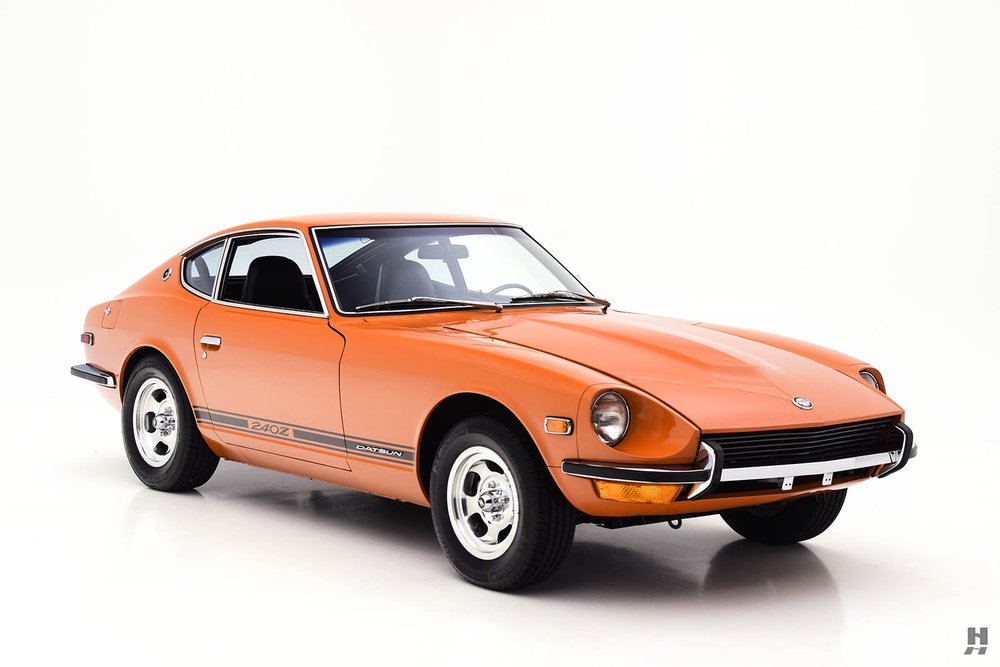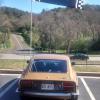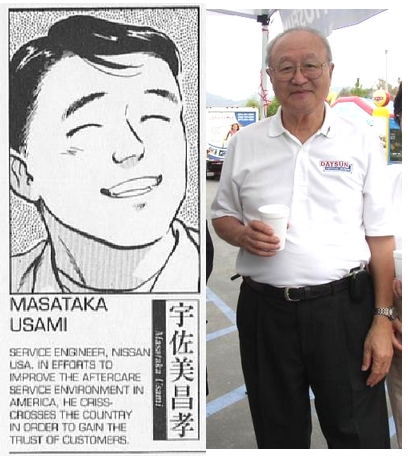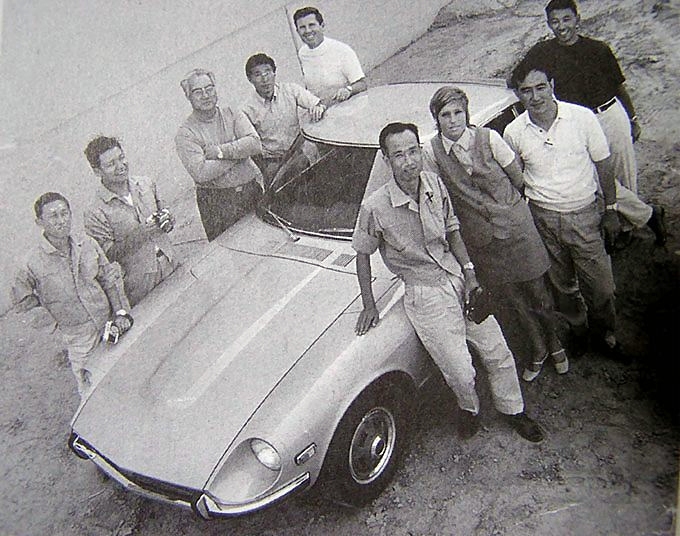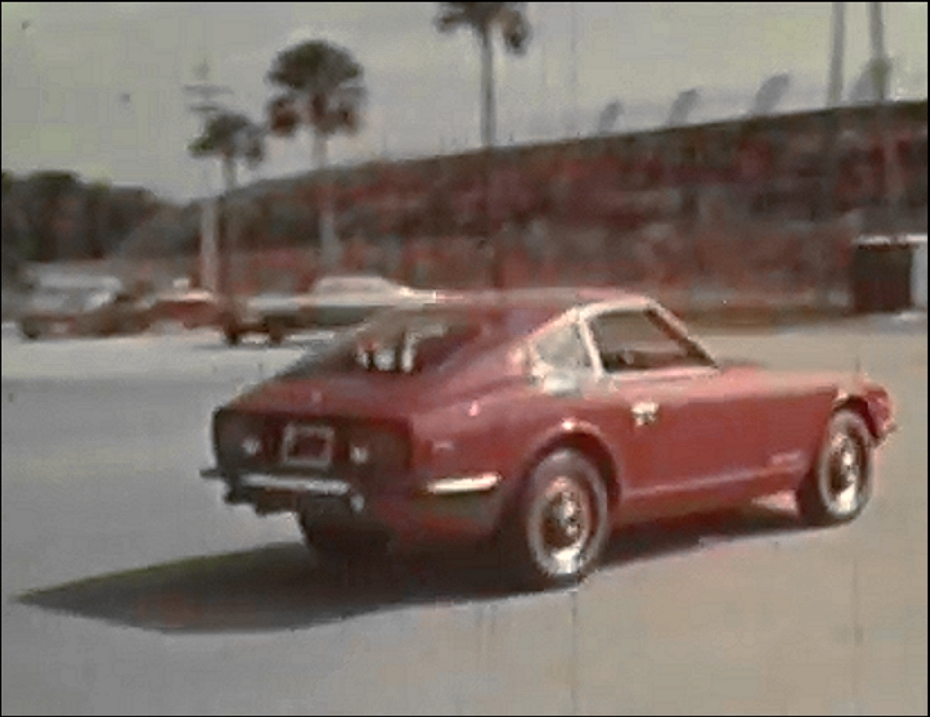Leaderboard
-
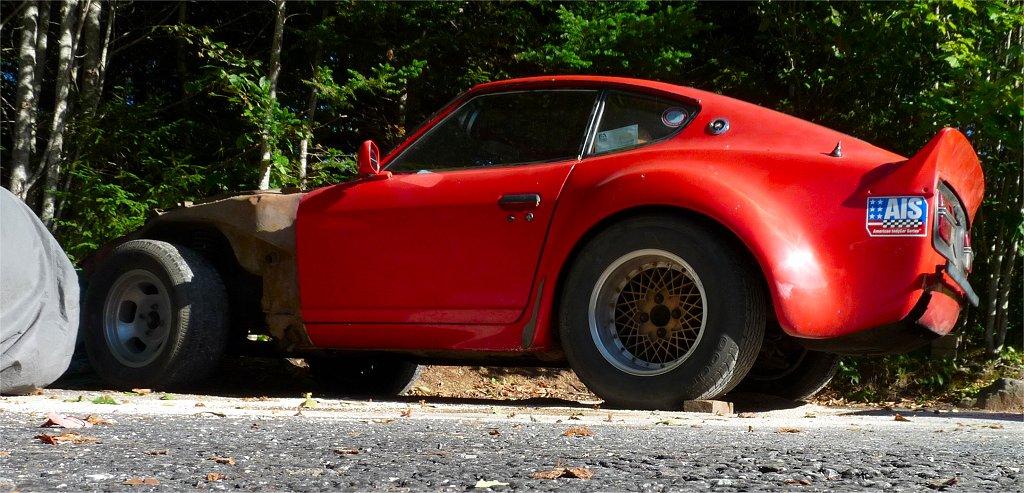

240260280
Free Member6Points4,441Posts -
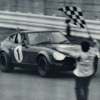
HS30-H
Free Member3Points5,419Posts -
Carl Beck
Free Member2Points5,024Posts -
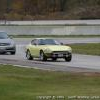
Marty Rogan
Free Member2Points1,615Posts
Popular Content
Showing content with the highest reputation on 01/15/2017 in all areas
-
The Displacement Bug Hits Japan: First 3 litre Z was in 1971
Driver: Masami KUWASHIMA Name: "Fairlady Z Black Special" Type: Datsun Sports 240Z Chassis: Nissan HS 30 Engine: Nissan H 30 (3 litre Inline 6 from President) Displacement: 3.0 litre It raced at Suzuka Great 20 Drivers' Race August 12, 1971 with triple Webers. Car #11 Here is the same engine in a Cedric much earlier. Learn something new every day!2 points
-
Nissan Factory restoration cars
2 points$70K? Wow! I remember seeing one in 2004 when my son and I visited Peak Nissan in nearby Littleton, CO. It was originally purchased in 1996 or 1997 by a gentleman in Florida and Peak Nissan had it on their showroom floor. Asking price back then was $30K. Here are a few pictures that my son took of the car. By the way, Chris, I would love to buy a copy as well.2 points
-
The Displacement Bug Hits Japan: First 3 litre Z was in 1971
I own the ex-Masami KUWASHIMA Fairlady 240ZG, which he imported to the UK from Japan as his personal transport when he was competing in European F3 and F2 in the early 1970s.2 points
-
L24 Battles Six S20's. Guess who wins?
By July of 1970, the Nissan Factory Team had entered the 432R in four significant* endurance races. They did very well at quickly reaching number one place in a short period of time: January All Japan Suzuka 300Km (dnf) [it snowed too] March All Japan Stock Car Fuji 300Km (2nd) April Race de Nippon Fuji 6hrs (1st) May All Japan Suzuka 1000km (1st) 1970 All Japan Suzuka 300km (Jan 18, 1970) Car #68 Fairlady Z432R Moto KITANO (dnf) 1970 All Japan Stock Car (March 21/22, 1970) Fuji 300Km Car #20 Fairlady Z432 24 laps Time 39: 36.16 Moto KITANO (2nd) Car #16 Fairlady Z432 24 laps Time 39: 36.43 Masahiro HASEMI (3rd) 1970 Race de Nippon (April 12, 1970) 959km Car #1 Fairlady Z432R 159 laps Moto KITANO / Masahiro HASEMI (1st) 1970 All Japan Suzuka 1000km (May 23/24, 1970) Car #19 Fairlady Z432R 167 laps Hiromi NISHINO / KOJI FUJITA (1st) The next significant race was on July 25 and 26th. It was the All Japan Fuji 1000km Race. 104 teams battled for the 50 slots available for the final 1000km event on July 26th. By this time the Nissan works team had several 432R's configured and other teams had access to the 432R. A total of seven 432R's qualified for the final in the GTS-2 category. This race was particularly interesting as the GTS-2 rules enabled engine displacements up to 2.5 litres. The Nissan Oppama Factory Team availed of this. In one of the 432R chassis, they replaced the S20 DOHC 2.0 litre engine with a 240z's L24 SOHC 2.4 litre. The S20's were further embellished with mechanical fuel injection where as the L24 had triple Mikuni carbs. Due to the fact that all the bodies were the same lightened spec of the 432R, this race became an apples-to-apples engine comparison where a more sophisticated and complex, but smaller displacement, 4 valve, DOHC S20 was pitted against a relatively simple 2 valve SOHC L24 with more displacement.... but it was six against one. As they say in the USA: "K.I.S.S. Keep It Simple Stupid." and "There ain't no replacement for displacement.". Above is the L24 with Triple Mikunis that challenged Six S20's in the very early days of S30 racing. The 1000km race took place during a heat wave with air temperature at 30C (look at the crowd sheltering from the sun in the upper grand stands in the photo above). The race ended after the first car completed the required 1,000km (233 laps). The seven 432R's starting places were: Car #32 Pole Position (Kenji TOHIRA & Takatoshi TERANISHI) Car #30 2nd (Yasumori TOSHIMORI & Kazuyoshi HOSHINO) Car #31 5th (with L24 engine) (Takahashi KUNIMITSU & Motoharu KUROSAWA) Car #28 6th (Saburo KOINUMA & Takamichi SHINOHARA) Car #34 7th (Masami KUWASHIMA & Kenji TAKAHASHI) Car #37 15th (Minoru SATO & Kazuo ISHII) Car #27 20th (Isamu MIURA &) The race had the classic "Le Mans" running start. During the race, a GT-R in the TS class challenged the L24 432-R There were also crashes. Car #27 crashed on lap 35. Several spins: Lots of exciting passing And problems with lug nuts: While in the lead at 5 hours into the race, Car #31 had to repair a broken lug nut that was discovered on a scheduled pit stop. This allowed the GT-R Car #54 in TS3 Class, piloted by the great driver, Masahiro HASEMI, to grab the lead. On Lap 225, the L24 powered 432-R reeled in the GT-R and passed it. After 233 laps of the 4.3km course, the 432R with L24, Car #31, got the checkered flag. It won the race and it won the class. More interestingly, Takahashi KUNIMITSU and Motoharu KUROSAWA in their "Datsun Sports 240 Z HS 30" easily took on, and defeated, six similarly prepared 432R's with S20 engines. Car #31 432R with L24 Engine Wins the All Japan Fuji 1000km Race. Motoharu KUROSAWA(l) and Takahashi KUNIMITSU (r) The L24 in an effectively "lightened 240z chassis"**" finished two laps ahead of the nearest S20 432R competitor. The rest of the S20 432R's finished 34, 95, 146, 198, 210 laps down. The L24 had no competition. It was strong, reliable, and a race worthy engine that proved itself on its first outing in Japan. As an epilogue to the race, there was great disappointment for the S20 engine. The All Japan Fuji 1000 km results were the writing on the wall for the relatively new S20 power plant. Going forward, it was generally not favoured by racers in classes where the L24 could be used. In fact, the following year's 1971 Race de Nippon 6hr was won by a Factory 240z L24 piloted by Takahashi KUNIMITSU & Masahiro HASEMI. If you recall from the top of this post, this is the same race where, in April of 1970, the S20 432 alos piloted by Moto KITANO & Masahiro HASEMI captured its first win. The reign of the S20 was short indeed. Masahiro HASEMI, the former great racer and team owner (who was the first to place first in the 432-R and who placed 11th with the fastest lap in the famous wet 1975 Japanese Grand Prix race at Fuji (Lauda withdraws, Hunt gets 3rd) ) states: that in having raced the Factory 432R's fitted with both S20 and L24 (as a Factory team driver for Nissan), it is the L24's mid-range torque that gives it the advantage when battling S20's. When going off the racing line, torque matters. With the experience as a team owner, he comments that the L24's simple design is easier to tune and to maintain for racing duties compared to the more complex S20. This is why privateers in Japan welcomed it with open arms following its first showing and first win at the 1970 All Japan Fuji 1000 km. HASEMI also comments that he favoured the Skyline GT-R over the 432R. He found the 432R to be too flexible for circuit racing. Note: HASEMI piloted the GT-R in this race that placed second. This placed him first in his TS3 class. A few interesting food-for-thought take-aways: The Japanese Automotive Federation, rigorous in its ways, records the winning chassis to be a "Datsun Sports 240z HS-30" (RHD version of the same chassis shipped to the USA) where as the other 6 Z's are stated to be Fairlady Z432 PS30. So, was the winning Chassis really a 432R with an L24 popped in? Also, was the 432 JAF record missing the "R"? The heavier 240z body exported to the USA was further race-strengthened there through stitch-welding, panel reinforcements, and bracing yet it still continued to win championships for a decade with the additional weight; therefore, was the designed weight savings of the 432R chassis variant along with the accompanying rigidity challenges, lost in the mix? Is it possible the 432R body was designed for, or was just a better fit for rallying purposes rather than track? Notice the evolution to chin spoilers between May and July. I wonder what parallel evolution was going on in the USA? Should the winning L24 & Chassis be renamed from 432R to 231R? S20 engine seems to excel at high rpm, high speed, open track qualifying as per HASEMI's comment that it works well on the racing line and by its favourable qualifying times. * Other races include: Photo TBD. Jun 6/7 All Japan Fuji 300 Mile Race Tournament Masami KUWASHIMA Car #4 Fairlady Z432 25 laps Time 56: 53.98 (1st) Jul.5 6/7 Hokkaido Speedway Yasumori SHINOMORI Car #3 Fairlady Z432-R (PS30SB) 57 laps Time 1:09'51"09 (3rd) Jun 28 All-Japan Driver Championship Round 4 Tsukuba Tournament Masami KUWASHIMA Car #66 Fairlady Z432 50 laps Time 59: 23.56 (2nd) ** 432R chassis was of nearly same dimensions as 240z HS/HLS30 chassis but with thinner sheet metal in places and thicker gauge steel in areas and components requiring it. There were some replacements of parts such as the hood and some glass with lighter materials. It sat ~ 5mm higher than a typical 240z.1 point
-
Nissan Factory restoration cars
1 pointIs the Seller advertising or offering this Z - as a Vintage Z? Is this the car the OP was asking about?1 point
-
Nissan Factory restoration cars
1 pointI have this picture from the seller. It is not a Vintage Z. The VIN is HLS30-22547. It is a Les Cannaday / Classic Datsun restoration, however.1 point
-
Nissan Factory restoration cars
1 pointHere are few photos of another example from the MSA show in 2002. If memory serves me correctly, the car was for sale for around 22-24K1 point
-
Nissan Factory restoration cars
1 pointGreat set of pics, thanks for holding on to them and sharing with us.1 point
-
L24 Battles Six S20's. Guess who wins?
Value is meaningless, it is subjective. Ability is measurable which is why the numbers are so important, if a sports car can't stand up to scrutiny of its numbers then I guess you are being "delivered a message telling you what you should have already known" but will never admit to it. The 432R was a very good attempt but the engine was it's weak point, it was heavy, overly complicated and too small which is why they dumped it. A+ for effort, B- for execution. The 432R with a better engine would have been formidable and as we see here in this thread, it was. Your ability for for self delusion is remarkable Allan, you just don't seem to understand what racing is all about. The winner of the race should not be taken into account? Are you serious?! Give your head a shake man. You are looking through the wrong end of the telescope again, racing and racing history is about objectivity, that is why the numbers are recorded in the first place. Please, at least try to keep yourself out of the equation.1 point
-
L24 Battles Six S20's. Guess who wins?
There are so many driver names that require correction, I'd better list them up: Family name in capitals: *"Kitano Yuan" = Moto KITANO *"Masahiro Hasayami" = Masahiro HASEMI *"Kenji Tsubairi" = Kenji TOHIRA *"Teranishi Teranishi" = Takatoshi TERANISHI *"Takahashi Kokoh" = Takahashi KUNIMITSU *"Saburo Koumuma" = "Saburo KOINUMA *"Ishii Kazuo" = Kazuo ISHII *"Sakurai Ichi" = Hajime SAKURAI1 point
-
FILMS "Road test in the U.S. & CANADA Oct-Dec 1969"
Standing to the Right of Mr. Katayama's Secretary is Mr. Shiro Tsuchiya - responsible for Complete Vehicle Testing. There is some confusion related to the colors of #7 and #8 - which may be my fault. The Red 240Z at Daytona is #8. It is pictured in the B&W Photo on Jan. 1970 R&T Cover.1 point
-
Jury Rigged Fuel Pump and Strange Behavior
The correct term is "Idiot Previous Owner" or IPO. Pretty much every Z owner has the potential to be an IPO in some form or fashion. That is one of the reasons my widow will sell my cars. I do not want to be alive and called an IPO.1 point
-
L24 Battles Six S20's. Guess who wins?
Looking over the engine compartment pic above... In addition to the stuff you mentioned, here's a couple things that caught my eye: Special "racing tape" secure on the clutch and master cylinder caps. Multiple piece upper radiator hose? Hose clamps in the middle? Vent nipple on valve cover angled forward to adapt to different PCV system. "OIL" cap. I thought the early ones were elephant? Couple unharnessed wires up and over the left strut tower. Is that stock? "D" shaped washers on some of the fender bolts for clearance into sheet metal corner.1 point
-
FILMS "Road test in the U.S. & CANADA Oct-Dec 1969"
Hi Kats, Could that be Mr. Masataka Usami standing to the right of the model in the photo above? Also would he be the expert tuner in this still from your videos? (with Mr. Hitoshi Uemura on the left)1 point
-
Deja Vu: 1971 Restoration
1 pointmy car #65002, which as far as i can figure, was built in 1/72, has the pockets for the seatbelts, and the retractors1 point
-
FILMS "Road test in the U.S. & CANADA Oct-Dec 1969"
Hi Carl, It would be great to see more pictures of HLS30-00006 (Green) at the NYC International Preview at the Pierre Hotel. HLS30-00007 (Red) at ARRC Daytona Nov. '69 seems to have no badges on the hatch as per what Mr. K said It has the B Pillar badges, front hood badge, and the front fender badges in the video. HLS30-00008 (Silver) seems to have correct badges in all photos I have seen. (btw 7 & 8 seem to have white stripes on tires but not 6)1 point
-
FILMS "Road test in the U.S. & CANADA Oct-Dec 1969"
1 point
-
Project Boondoggle (or, so I went and bought a Z!)
My '77's best help with a lot of good pictures, http://atlanticz.ca/index.php/tech-tips.html1 point
-
'72 240Z Rebuild
1 pointThe video is what I'm talking about. Heat makes them come out easier. The machine shop has a machine that heats them beside the press where they press them out. If I was going to balance. I would have someone press them out for me if necessary. Balance them at home and reassemble. I have a 20T press at the house so I can probably do it all here now. A hammer would not be my first choice... C1 point




